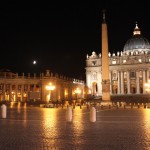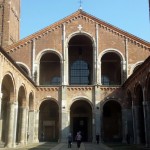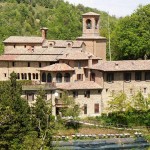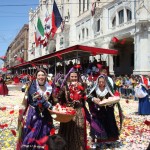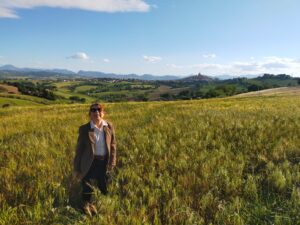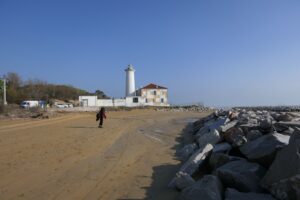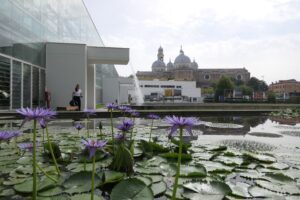Discover the excavations and the very place where Peter was buried
Pilgrims in Assisi at the Basilica of St. Francis
The famous Caravanserraglio outside and the frescoes painted by Giotto inside
Pilgrims in Assisi!
Here is the 14th century Basilica of St. Francis, where the Saint’s body is preserved. In front of it, the “Caravanserraglio“, a huge portico that was used to accommodate pilgrims.
Inside, the upper Basilica contains the famous frescoes of the life of St. Francis, painted by Giotto in 1300. We do revise some steps of the Saint’s life and vocation through the paintings, some kind of dramatisations having the aim to tell the folk about him.
⇒ Watch the full web serie “Slow Tour in Umbria”
Video full text: Assisi
Here I am, a pilgrim in Assisi.
This is the Basilica of St. Francis…
where the Saint’s body is preserved.
And when this Basilica was built, in the 14th century, it took just two years to complete.
They also built the Caravanserraglio, this huge portico that was used to accommodate pilgrims.
They could also sleep under the portico, and then get together, have a market, do some bartering.
The upper Basilica contains the famous frescoes of the life of St Francis, painted by Giotto in 1300.
These are some dramatisations from the life of St. Francis… How else could you tell the folk, the people, about the Saint’s life?With a series of paintings, “comic strips” that Giotto gave us…
to help us understand what the life and work of St. Francis was.
So let’s begin with this dramatisation.
St. Francis lives in Assisi, a rich town of merchants.
This part shows really well how the city might have been.
It’s also very interesting for seeing a place that we do not know.
Brother Marcello comes to my help.
Francis is passing by and this peasant here has a feeling that this young man would become a great Saint.
The people around him don’t understand, they are perplexed.
Take a look at how these two are looking at each other.
“Who is he giving the cloak to?” – they seem to be saying.
In this other painting St. Francis is giving a cloak to a poor man.He begins giving his chattels away.
The denuding of St. Francis is really beautiful, an incredible and exceptional event.
The idea of stripping himself of all his possessions and to become poor among the poor.
He, the son of a very wealth merchant.
And so it was that Francis very slowly began changing his lifestyle.
They obviously thought he was mad.
In that period of history ecclesiastical power had declined so much amid wealth and corruption…
that it was in need of real vocations like that of St. Francis.
But Francis actually did travel to the East.
Here Giotto tells us, in a mythical way, about when Francis attempted to convert the Egyptian Sultan al-Malik al-Kamil.
He had to succeed in converting the Egyptian Sultan to the Christian religion.
To show him that the true God is the Christian God.
But the Muslims obviously had to do the same.
Francis suggested trial by fire, but the Muslims fled.
Francis was getting ready to walk through the fire, but the Sultan forbade him from doing so.
And if he had walked through the fire and come out unscathed, the Sultan would be made to look a fool in front of his men, and he might even have had to change religion.He practically recognised Francis’s God and allowed him to return home safe and sound.
Which at that time was a great success for Christians.
From the East, Francis perhaps brought the spirituality of the Sufis, his habit and his asceticism.
Preaching to the birds
By putting the Gospel into practise, living a life of poverty, chastity and obedience, Francis became like our first born, pure and chaste like them.For this reason he too was now able to speak to the animals.
And what did he say to the birds?
Blessed are you who get everything from nature and are in need of nothing.

